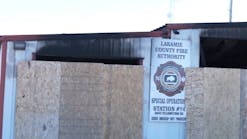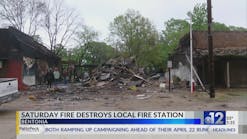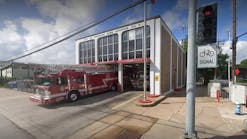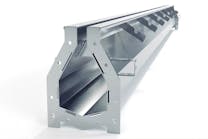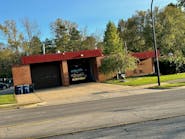Note: This article is part of the Firehouse 2024 Station Design Supplement. To read the entire supplement, click here.
About 20 years ago, following a fire conference debrief, a few of us specialized architectural speakers from various parts of the country discussed how we could provide an increased dimension to the conference for future attendees. As time passed, one conversation led to the next. Being an architect often means a lifelong journey of exploration and improvement. Critical thinking, curiosity, adaptability and problem-solving run through our blood. In many ways, we couldn’t help ourselves from tinkering with what we believed already was such a magnificent event.
As we dug into take-aways from our experience, we recognized that most conferences and lectures provide a passive learning environment, a mostly one-way communication where a speaker imparts select information to the audience that’s curated by conference organizers. This conference, however, felt quite different. From Day 1, there always was an undercurrent that this annual event was about bringing differing opinions and thoughts together from across the United States from participants from an array of departments, design specialty firms and, even, product vendors, to advance the dialog relative to public safety design.
Through discussions with Janet Wilmoth, who is the Station Design Conference director, the dialog continued. We brainstormed on how to introduce another facet to the conference to enhance the dialogue that’s conducted between presenters and attendees. Although we still wanted to impart our specialized experience and bring awareness to trends in facility design to the broader audience, we believed that a focused forum that provided individualized, tailored guidance, which was informed by a group of divergent specialists, was a gap that needed to be filled.
Through continued conversations and refinement, we devised the idea of a pre-conference event, like a warm-up band for the big show. This “unconference” component could be more informal, conversational, raw and experimental. We wanted to create an environment where an attendee could bring questions, from start-up to the finest of technical detail, to the group for feedback. As a group, we then could draw on our national collective experience to bear on the topic. Although we all believed that lectures provided valuable insights, it was essential to balance them with interactive sessions to iterate questions and ideas. The outcome was the creation of the 1-on-One experience.
Fast-forward
Now in its 10th year, the 1-on-One pre-conference session of the Station Design Conference has evolved into a unique opportunity to meet individually with nationally recognized emergency service design specialists, with several thousands of facilities under their collective belt. Whether in regard to capital facility planning, fire and police station design, public safety facilities, training facilities, or dispatch and emergency operations centers, the session allows for an in-depth exploration and examination of unique projects. The result is collective guidance, shared experience and mentorship to move projects forward. The timing of this session essentially allows for attendees to create personalized meetings on the spot, making for an energizing, freewheeling, project-focused exchange, which then is reinforced by the broader station design event. The timing is set strategically a day before the lecture schedule to avoid participants missing talks, networking and the exploration of exhibits.
What to expect
The 1-on-One session begins with a group orientation to connect one another to purpose, share who is in the room, identify where individuals are in their station design process, and spitball questions, opportunities and challenges that are faced. Often, attendee participants are experiencing similar issues to each other and dialog both during and after the group session.
Following the 1-on-One introductory session, a broad theme is presented to provide a mindful kickstart to the individual roundtable sessions. Individual sessions are prescheduled by the 1-on-One team throughout the day and additionally throughout the main event, if desired, to support a deeper and more personalized conference experience, with an associated wrap-up session.
We have found that Station Design Conference attendees might have questions or want to discuss specific topics, but there often is minimal opportunity to get feedback in the conference setting or during breaks. We have come to understand that engaging discussions are crucial for a deeper understanding of the issues at hand. Questions that range from “How do I start planning for my facility?” to “What are the nuances to achieving a zero-energy facility?” can surface.
The mission of the 1-on-One always has been clear: provide third-party guidance that’s based on collective experience (no questions are too challenging), problem-solving, alternative insight and forward-thinking. The broader goal is to elevate and share decades of knowledge between participants to support communities and those who serve them.
Effect on attendees
Several years ago, members of the police and fire departments from the city of Skagway, AK, attended the Station Design Conference and tiptoed into the 1-on-One session looking for insight as to where to begin the planning process. New to all things funding, design and construction, they were eager to understand how to even start on a path toward creating a new combined public safety building.
Following the 1-on-One introductory session, they realized that they weren’t alone. During their scheduled roundtable session, the regional challenges of funding and a project-specific roadmap for building a community-centric case for facility replacement and right-sizing a public safety facility were discussed. Broad ideas around potential funding strategies that other projects took were explored. The group left the session with information in hand and went on to attend the broader conference to round out its learning experience. After speaking with the Skagway group mid-conference, these people clearly were overwhelmed but supercharged, too, to have some tools with which to move forward.
Surprisingly, the group returned to the 1-on-One session for several years in a row. Each subsequent year, the people from Skagway brought more nuanced plans, ideas and what-if scenarios to have the 1-on-One experts validate and process. The Skagway group continued to adjust its initial living framework and used its sessions as sounding boards for continued feedback. Members of the group said that the process empowered them to bring a tangible roadmap back to the elected officials. In time, this incremental process resulted in the funding and construction of a new public safety building.
Defensible decision-making
With many groups with which our firm already is working, we encourage them to attend the Station Design Conference and, in particular, this pre-conference event. One might ask, “Why would a national public safety specialist firm recommend clients speak with experts from other firms?” The short answer is, great ideas can come from anywhere, and we always strive to raise the collective bar, to ensure that each generation’s facilities are better than that of the previous generation.
Ensuring a project’s decision-making process is defensible to one’s broader community is extremely important, and, if that can be done in a productive and meaningful way, it only can add value. Testing and scrutinizing designs and documents via a peer review from an unbiased expert from a different region has been invaluable for 1-on-One attendees.
In 2023, our firm encouraged one of its clients, South Beach Regional Fire Authority (Westport, WA), to attend the 1-on-One session. We worked with them to develop a program, a site test analysis and a conceptual design to bring to the pre-conference event. Following up with the client in the weeks that ensued, these folks reported that their 1-on-One was quite meaningful, and it reinforced the decisions that they made to date.
Many times, we have debriefed internally, post-session, to discuss a facility plan’s strengths and weaknesses. At times, plans are adjusted based on the session; at other times, decisions are substantiated. This takes a level of trust, of letting go and of respect for the wisdom that’s brought to a 1-on-One, to support productive outcomes for each attendee.
Budgets
One of the more difficult conversations that seems to arise on a yearly basis during the 1-on-One sessions concerns facility cost and overall project budgets. Telling attendees that the budgetary numbers that they are using are significantly off can be disheartening to them. However, getting ahead of that early is extremely important; putting off that news only exacerbates the problem. Taking early, decisive action and having conversations during 1-on-One sessions saved tens of thousands of dollars for attendees who might have a significant budget bust before they even started.
The 1-on-One specialists understand costs at regional and national levels and know that costs can vary significantly for very tangible reasons. Dispelling the myth that a department can design and construct “the same” facility as that of a nearby department for a significantly lower cost always is a challenge. Although design efficiencies can be found during the sessions, most often, the dollars per square foot that are tossed around aren’t apples to apples. Site development requirements can be significantly different. Facility quality might be different. Annual cost escalation might not be considered. The list goes on and on.
Although hard facility costs that are tied directly to materials and labor vary across the country because of differing code restrictions, material availability, labor availability, location, etc., another additive element to a project are soft costs. The balance of cost encompasses all aspects of a project beyond the physical construction. In 1-on-One sessions, dreams are encouraged, but, in the end, the band-aid must be ripped off, and a client must be realistic, prioritize wisely and not over commit.
Unparalleled value
At the end of the day, as Dennis Ross of H2M architects + engineers once stated, “We often sketch a layout or configuration that an attendee never thought possible or ever considered, and we watch as all of the pieces fall together for them. I believe that one of the best indications of attendees valuing the time and experience is that almost everyone who we meet with collects every scrap of paper, every sketch, every drawing, etc., and takes it with them.”
As the 1-on-One session kicks off the 2024 Station Design Conference in Glendale, AZ, on May 20, 2024, we encourage all of the attendees to participate at a deep level, to dialog with one another, to bring their breadth of experience to one another and to continue to advance public safety design together.
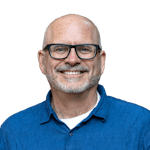
Brian Harris
Brian Harris AIA, LEED AP, NCARB, is principal/president of TCA Architecture + Planning and is a co-founder of the Station Design Conference 1-on-One sessions. He has been instrumental in the design of more than 325 fire facilities in 18 states, won more than 65 design awards and authored many forward-thinking fire-facility planning and design articles. Harris speaks frequently at national fire facility conferences and is the director of design education for the Washington Fire Chiefs fire facility section. He designed the first LEED-certified fire station and the first LEED training facility in the United States and worked on the first two Net Zero-Energy fire stations in the country.



